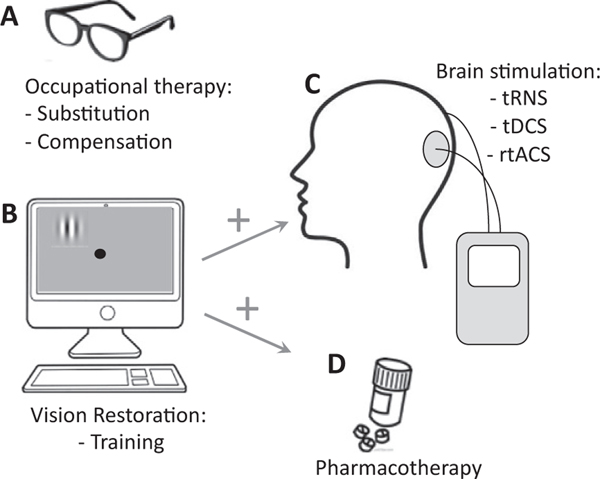Fig. 25.1.
Main experimental and clinical therapies attempted to date for vision rehabilitation after occipital stroke. (A) Occupational therapy includes both substitution (prisms or other lenses) and compensation (teaching eye and head movement) strategies. These therapies may improve quality of life but do not restore lost vision. (B) Visual restoration approaches may be accomplished through home computer-based vision training using a range of psychophysical tasks. The effectiveness of restitution therapy may depend on the timing poststroke, the specific training task used, and patient compliance, especially for fixation control. (C) Visual training could potentially be enhanced with noninvasive electric brain stimulation, of which there are many strategies currently under investigation as a potential adjuvant to training. tRNS, transcranial random noise stimulation; tDCS, transcranial direct current stimulation, rtACS, repeated transorbital alternating current stimulation. (D) Finally, visual training could also potentially be paired with pharmacotherapy to promotegreater recovery, although this approach remains to be vetted both experimentally and clinically.

